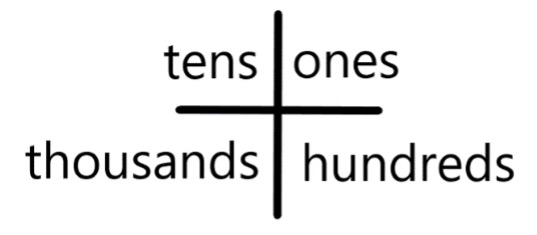This page created for the 32-bit Community Code Jam #2
Cistercian Numerals
character (noun) - a symbol (such as a letter or number) that represents information
There was a time in history when there wasn't a standard numbering system in the Western world. Both the Arabic and Roman numeral systems were in use during the Middle Ages. It was during this time, in the 13th century, that the Cistercian order of monks devised a simple yet elegant numbering system which was in use for 200 years throughout their communities in Europe.

Integers up to 9,999 could be represented using a single glyph. This was a great advantage as it saved space and was quick to write. However, it also had drawbacks, the biggest being it could not be used for calculations. So what did the Cistercians do with their number system? A lot of things! According to Stagnaro,
"...they were used for dates, to number pages in manuscripts, divisions of texts, the numbering of notes, lists, indexes and concordances, for parcels meant for delivery, musical notation, and even for calculations for Easter Sunday. The system was also brought in for notations involving agriculture and hydraulic engineering — a Cistercian specialty. The glyphs were even used to number wine barrels and to gauge the wine in those barrels even until the 18th century, and there are 14th-century astrolabes that use the Cistercian numerals to measure heights, distances and determine direction (2023)."
Puiu notes these numbers were used,
"... for astronomical tables compiled in Salamanca in the late 15th century (2023)."
Despite the system's widespread use, it eventually fell out of favor. It was resurrected throughout the years by various groups, Freemasons and occultists among them (Stagnaro 2023).

So how exactly did this numbering system work?
The base figure of any Cistercian numeral is the vertical stave (which, when alone, represents zero).

Elements are added to the vertical stave to represent the numbers 0 through 9.

So how do we get to numbers greater than 9? Well, first of all, imagine the stave divided into quadrants representing either ones, tens, hundreds or thousands.

- Elements in the ones quadrant represent numbers 1-9.
- Elements in the tens quadrant represent numbers 10-90.
- Elements in the hundreds quadrant represent numbers 100-900.
- Elements in the thousands quadrant represent numbers 1000-9000.
Larger numbers are created by taking the elements used to create 0-9 and placing them in a different quadrant, as shown below in the examples.


There are some fun things you can do, using Cistercian numerals!
- Check out this Cistercian Numerals Converter. Input a number and it will create a graphic you can download
- Create a digital clock with Cistercian numerals using LEDs and some 3d printing.
- Download a Cistercian numerals font.
- If you have Apple products there is both an app to download to help you learn the system as well as a watchface for your Apple watch.
- And if your nerdiness knows no bounds, you can head on over here to learn how to code a Cisterian numeral clock for your website. I mean, who wouldn't?

Works Cited/Image Credits
Merriam-Webster. (n.d.). Character definition & meaning. https://www.merriam-webster.com/dictionary/character
Puiu, T. (2023, May 7). What are Cistercian numbers -- the forgotten ciphers of medieval monks. https://www.zmescience.com/feature-post/natural-sciences/mathematics/cirstercian-numbers-90432432/
Stagnaro, A. (2023, January 8). The Secret Catholic Code of Cistercian Numerals. https://ewtn.co.uk/article-the-secret-catholic-code-of-cistercian-numerals/